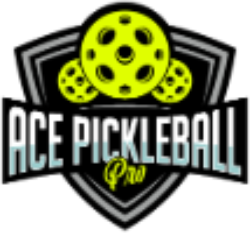Mastering the Feel, the Finesse & the Future of Precision Play
The Truth About Paddle Control (That No One Told Me)
My control didn’t break down during a rally—it vanished during the warm-up.
Every dink? Wobbly. Every drop? Short. It was like my paddle had a hangover and my wrist was trying to do calculus. Meanwhile, across the net, my opponent was placing shots like a surgeon. Not faster. Not stronger. Just… cleaner.
That’s when I realized: I didn’t need a new drill—I needed a new relationship with my paddle.
Welcome to paddle control. The real kind. The kind that turns panic into poise, “uh-oh” into “oh yeah”. If you’re serious about learning it, you’re in the right place. And if you’re new here, Ace Pickleball Pro is where smart players start.
So, What Is Paddle Control?
Paddle control is your ability to direct the ball with purpose—not just hit it back.
It’s what separates the players who react… from the players who rule the rally.
Control comes from:
- Your grip and technique
- Your paddle’s material and shape
- Your body’s position and timing
- And your mind’s ability to see what’s next
From dinks to resets to drives, control is the thread that ties your entire game together.
The 3 Elements of Paddle Control
1. Weight & Balance
- Under 7.5 oz → quicker wrist action, easier resets
- Over 8.2 oz → more drive, tougher touch
- Sweet spot? 7.6–8.2 oz with a slightly head-heavy tilt for finesse + follow-through
Pro Tip: A handle-heavy paddle = more wrist whip at the kitchen. Think fencing foil, not sledgehammer.
2. Core Material
| Core | Feel | Ideal For |
|---|---|---|
| Polymer | Soft, quiet | Dinks, resets, beginners |
| Nomex | Hard, fast | Aggressive baseline play |
| Carbon/Graphite | Responsive | All-court control + spin |
Still not sure? Here’s a breakdown of 13mm vs 16mm paddles—spoiler: thickness changes everything.
3. Surface Texture & Spin Potential
Texture = spin potential
Control = consistency under pressure
- Smooth face → cleaner contact, predictable feel
- Textured face → more spin, but can reduce control if not timed right
Pro Tip: Some paddles are now using nano-coated grit that stays legal while boosting ball bite1. And no—more texture doesn’t always equal better control. (See myths below 👇)
Myth-Busting: Paddle Control Edition
| ❌ Myth | ✅ Truth |
|---|---|
| “More texture = better control” | Texture helps spin, not control. Balance & core matter more. |
| “Heavier paddles are always better” | Not for touch shots. Too much weight = too much momentum. |
| “Carbon = power” | Not anymore. Paddles like the Selkirk LUXX Control Air are built for feel. |
| “You need a pro paddle to have pro control” | Your technique matters more than your paddle price tag. (But yeah… gear helps ) |
Want to Know Your Paddle Control Profile?
Take this 60-second quiz (mentally—or make it interactive):
-
What’s your default shot?
- Dink and drop
- Drive and attack
- Spin and trickery
- Versatile hybrid
-
Do you prefer wrist flicks or full swings?
- Wrist control
- Power rotation
-
Indoor or outdoor play?
- Indoor = more control
- Outdoor = more spin/stability needed
-
What’s your grip style?
- Small grip + finger finesse
- Full grip + max torque
Now compare your results to:
Mental + Strategic Control
- Footwork = control: Want to improve this fast? Try wall drills.
- Visualization = consistency: Pre-load the shot in your mind before you swing. That’s how pros look slow but land perfect placements.
The Future of Control? Smarter Than You Think.
Tech like SpinSmart and AI-driven paddles are already tracking:
- Swing angles
- Impact velocity
- Off-center hits
Some even give haptic feedback when you mess up. Wild, right?
Still Not Sure What Paddle You Need?
Here’s the move:
Start with our Buyer’s Guide—simple, smart, made for real players.
Want to compare specs? See our breakdown of good vs “meh” paddles.
Or dive right into:
FAQs (For People Who Like Smart Answers)
Q: Does more grit mean better control?
A: No. Grit gives you spin, but true control comes from balance, core, and technique.
Q: Are polymer cores good for control?
A: Yes—especially for touch shots and resets. Want more bite? Look for carbon-poly blends.
Q: Can I use lead tape to improve paddle control?
A: Yep. Try this guide for exact placement to fine-tune feel.
Q: Should beginners prioritize power or control?
A: Control first. Power comes with confidence and better timing. This guide breaks it down.
Q: What’s the best control paddle right now?
A: We review new ones monthly. Start with our Top 10 Picks or check the latest Best for Control roundup.
Ready to take full control?
👉 Start here: Explore All Paddle Reviews
👉 Or go all-in with our Best Control Picks of the Year

